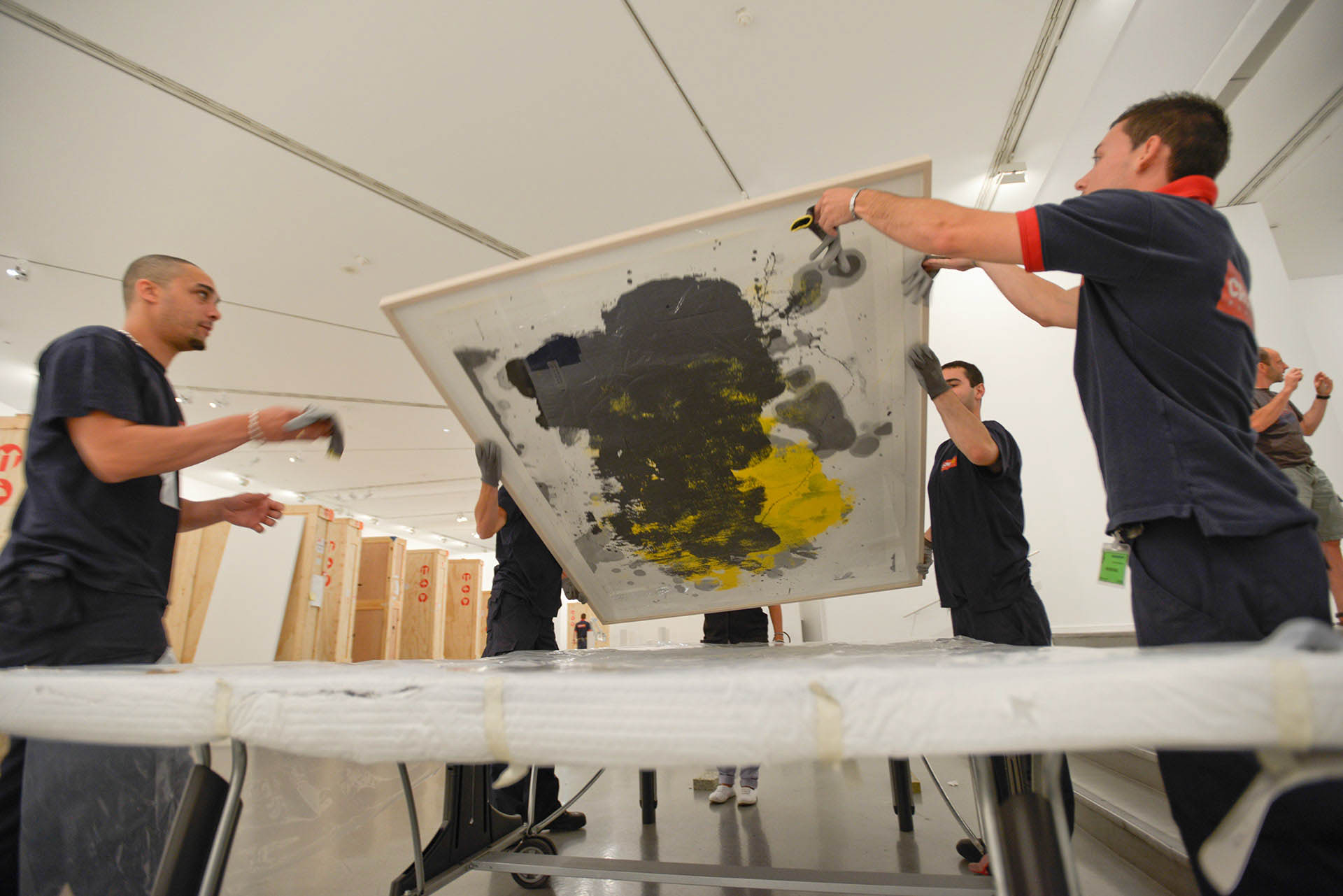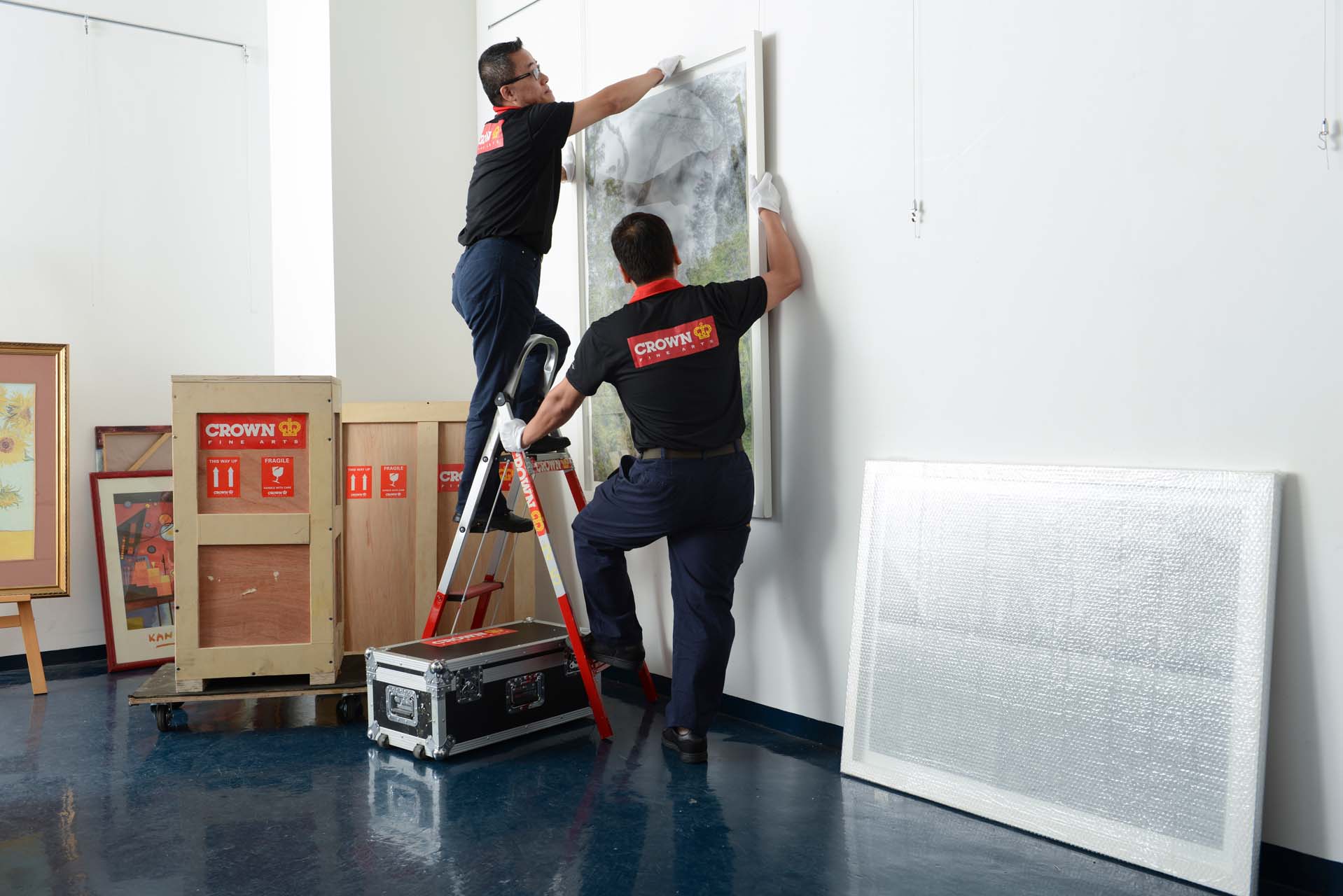One of our favourite words at Crown Fine Art is ‘just’, especially when used in sentences such as, “They just moved the sculpture from Italy to my 1st floor apartment in London.” Or, “They just transported, hung and lit my whole collection across the residence.” Or, “They just set up the exhibition for our opening tonight.”
This is exactly how we want our clients to feel, that nothing was too much trouble and everything happened correctly, while knowing deep-down that nothing has been left to chance.
1. Understanding the Fragility of Artworks
For every artwork owner, Registrar or Art Advisor who has had sleepless nights in advance of art shipping, art transportation or art storage we understand and work tirelessly to make the experience as painless as possible. The responsible art handling company should have an inherent attitude for positive preservation from the beginning; assuring their art technicians are fully trained from the junior to the most senior – not necessarily to appreciate the stylistic content of an artwork but to understand and value the making process and what to do to maintain it: To know how materials react to being handled in certain ways, to have a fundamental knowledge in how some materials chemically react against others, to quickly ascertain and mitigate against the weakest points of an object and to maintain safe working standards at all times.

2. Proper Packing Materials and Techniques
As no two artists are the same, rarely are two artworks ever identical. To the untrained eye they may look similar, but it could be as simple as the artist’s alchemy in one artwork may differ to the other or the way a framer has approached the mounting of one which could be different to the other. As such, the well-trained art technician will be asking themselves a huge range of questions before they even touch a work and their eye and training will be providing the answers. This process quickly ensures the correct selection of materials and the safest way to preserve the work’s condition during handling. Choosing the correct material to protect an oil will differ from the method required to packing a pastel or an ormolu object to a marble. Packing a work on paper for transit by sea will differ to packing a mounted C-Print for road transport.

3. Specialised knowledge and equipment at every stage of the journey
As well as trained art handlers, the responsible art logistics, art handling and art installation company will have several further layers of specialism to call upon. Dedicated and experienced coordination departments will be looking at the whole movement of the artwork from beginning to end and will be employing every technique in the book to make certain that standards are maintained throughout a journey. As standard, they will have a range of specialist knowledge and equipment to hand, from Technical Project Managers who assess projects in advance to air-ride, climate-controlled and highly secure vehicles, as well as climate-controlled and government indemnified secure warehousing. They will have a black book of like-minded and approved agents across the world with whom they work regularly and rely upon to ensure continuity of service from beginning to end – all of whom will have equivalent approaches to tracking, communication, service and problem resolution.
4. Art installation and Unpacking
Now that your artwork has reached its destination safely, it will be in the hands of the art technician again to carefully unpack, assess and install. With more than thirty different methods to art installation there is skill, judgement and sometimes a great deal of forward planning required at this point because each choice exists for a reason relating to weights, dimensions, weakest points of frames or within the very fabric of the walls being used to hang on. Some methods may relate to security requirements others may be to the look and feel that the artwork’s owner, lender, borrower or even a commissioned interior designer has specified. Others, again, may be to do with the constant turnover of exhibitions to be hung on a wall. Each needs consideration and experience to know what is best for the aesthetic and presentation of the work while never forgetting the constant overarching need for safe handling to ensure not a scratch, or a crack; not the slightest blanching, blistering or blooming; not a chip or a flaking; a lifting or a loosening; a puncturing or a scraping; any wear or, indeed, a tear.
At Crown Fine Art we know that all you want is for everything to go ‘just’ right.
Crown Fine Art have been providing art shipping, art transportation, art storage and art installation since 1965.
Topic
Article
Published
Aug 1st, 2023
Written By
Paul Beatson
Paul Beatson is the Senior Technical and Project Advisor at Crown Fine Art
